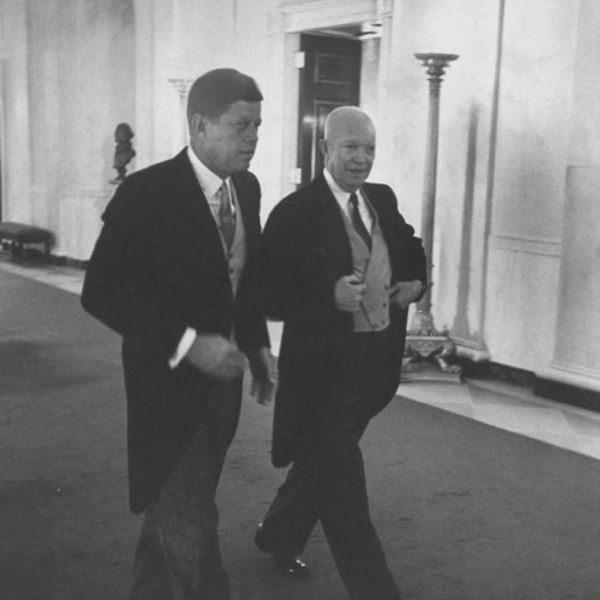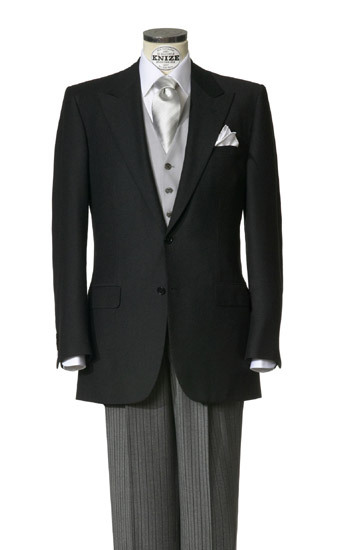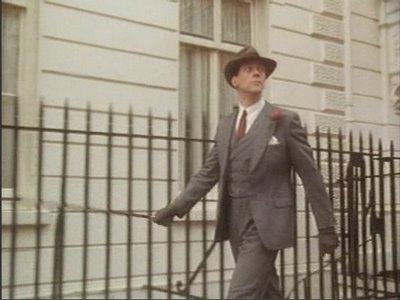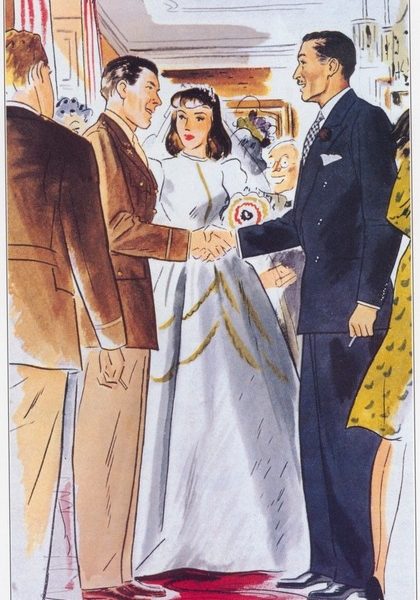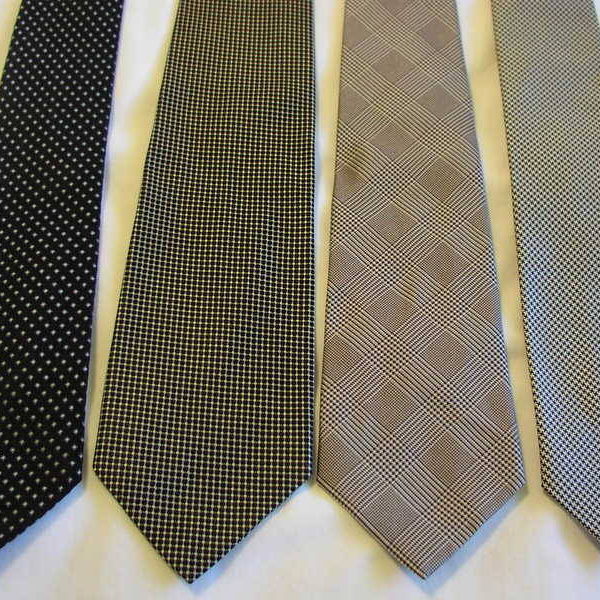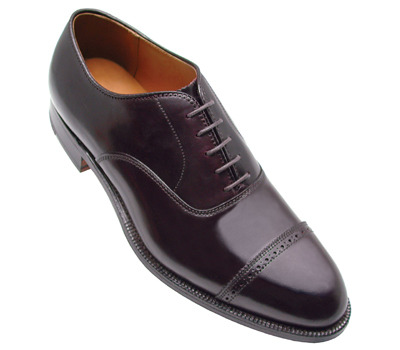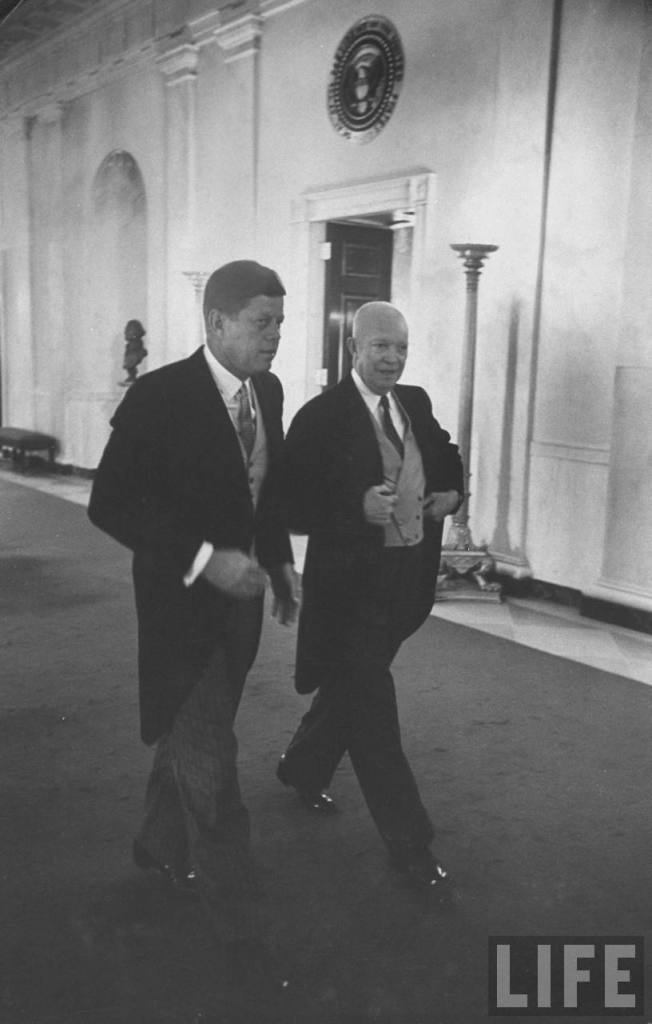
- Ike and JFK in Morning Dress
- Daytime Semiformal: The Stroller
- Grey Suit with Double-Breasted Waistcoat
- A navy double-breasted peak lapel suit.
- Wedding Ties
- Punch-Cap Balmorals
For men who aren’t confident in their style, the question of what to wear on their wedding day can be a source of tremendous discomfort and fear. So much so that men often abdicate their one tiny bit of wedding day autonomy to their wives-to-be. I say: stop. Don’t. Your fiancee does not know the answer, though she may think she does. If she does think she does, your situation is even worse. Dress yourself. LIKE A MAN.
I know that you may need some help. That’s why we’re here.
And I’ll get to the help in a second, but first, one commandment from on high: DO NOT WEAR A TUXEDO DURING THE DAY. It’s called an evening suit for a reason. Again: DO NOT WEAR A TUXEDO DURING THE DAY.
Now, on to the friendly advice.
Weddings are important, and thus demand some level of formality. If like most Americans, your wedding is during the day, you have several levels of formality available to you: formal (a morning suit), semi-formal (a stroller) and informal (a suit, or as it is traditionally known, a “lounge suit”). Each of these has an evening equivalent – white tie (formal), black tie (semi-formal) and, again, the lounge suit for a more informal ceremony. (There are also some people who get married on a beach wearing flip-flops and a sarong. We wish them the best of luck.)
Daytime Formal: Morning Dress
The traditional daytime formal style is called morning dress. If you live in the United States, you won’t see this style of dress, but it persists a bit more in the UK, where it’s sometimes worn for holidays like Easter, in addition to weddings. Here in the US, you’re most likely to see it on lawyers arguing before the Supreme Court, or, from time to time, in daytime weddings.
This outfit is worn above by President Ronald Reagan to meet with the Japanese Emperor. It features a tailcoat, typically with peak lapels and one button, along with special trousers, which are black, white and silver, either in a pattern called a “cashmere stripe,” or in a heavy chalk stripe or a check. The man also wears a vest in dove grey (or buff), and a wedding tie. Like the pants, the wedding tie features a pattern in black, silver and white. (You can also wear a wing collar and an ascot, but even I think that’s a bit much.) These are paired with simple black shoes, well shined. No split toes, no rubber soles, no bluchers with the lace hole area separate from the forefoot.
It’s nearly impossible to find this stuff ready-to-wear in the United States. It’s possible to find these clothes vintage, but can be difficult. Most bespoke tailors and many made-to-measure houses will be familiar with them and able to make them up for you. Some rental shops will have them available, but they’ll likely be in a 70s-ish semi-polyester ill-fitting style that makes you look like you’re getting married on The Love Boat.
Daytime Semi-Formal: The Stroller
The stroller is a more casual style of daytime formalwear that is more achievable for most men. Most of the clothing is identical to morning dress, above, but the tailcoat is replaced with a more manageable tail-less coat in black (or charcoal gray, in some even more casual cases). This coat should still be single breasted with a peak lapel.
One way some men achieve this look is by having the pants and vest made (or ordering them from a traditional UK retailer), and purchasing a quality ready-to-wear suit in black or charcoal. A black or charcoal gray suit can be worn for funerals or evening events for many years. The coat, though, should be single-breasted and have peak lapels. One button is best, two is fine, three is a bit much.
Evening Formal & Semi-Formal
In the evening in the US, it is appropriate to wear white or black tie, particularly if your wedding isn’t taking place in a church. I went to a New Year’s Eve wedding a few years ago in a naval mansion, and it was lovely to see the gentlemen in black tie. If you think you and your guests can execute white tie, then I encourage you to give it a shot, but rare is the party that can do such a thing these days, unless you and your betrothed met at a Swiss boarding school for the children of ambassadors or something. I’ve written about the standards of black tie already, here.
The Lounge Suit
The lounge suit (now often called a business suit) was once designed for lounging. Men did business in a stroller, and ate dinner in their evening suits. Today, though, the lounge suit is the go-to garment for business and most events that require more formality than flip-flops. For most modern weddings, lounge suits are the most appropriate option.
Suits at weddings should convey the significance of the occasion, and also make some differentiation from business dress. In the latter category, the most important consideration is probably avoiding stripes. Stripes, and especially pinstripes, are specifically for business, and have no business (sorry) in a wedding. Black suits should also be avoided – you don’t want anyone confusing the ceremony for a funeral service, and you don’t want anyone confusing the groom for the officiant.
To convey the significance of the occasion, your best bets are solid navy and solid charcoal. Solids are always more formal than patterns, and navy and charcoal are the most formal solids which are appropriate for celebrations. Peak lapels are more formal than notch lapels. Remember above all when choosing styles to choose conservatively: you don’t want your wedding photos to look like a gag in thirty years.
Shirts with lounge suits should be white, and preferably with a spread collar and french (or double) cuffs.
Shoes, as in all of the daytime options, should be simple oxfords or balmorals, well-shined. Balmorals are distinguished from bluchers, which are more casual, by their enclosed lacing. Above are pictured a nice pair with a cap toe and punch decoration (broguing) along the toe seam. More decoration means more casual – a similar style without the broguing is also appropriate. Strictly speaking, you can wear balmoral boots (though they’re tough to find for less than a thousand dollars or so). A simple cap-toed balmoral is a shoe that can be worn in almost any situation, and is a very worthwhile investment shoe.
The Wedding Tie
Traditionally, wedding dress that requires a long tie (such as a lounge suit or stroller) calls for a wedding tie. Wedding ties typically feature bold patterns in a simple pallette of black, white and gray or silver. The Glen plaid is often easiest to find, but a Macclesfield, shepherd’s check, or houndstooth are all appropriate as well. There are certainly other options, but you’ll be safe with those patterns. A wedding tie is very wearable in any semi-formal celebration, including weddings where you are the guest.
Matching
The level of formality of clothes in the wedding party should match, but the clothes themselves need not do so. If your wife-to-be is wearing a party dress from BCBG, you shouldn’t be wearing white tie. If you’re wearing white tie, your wedding party shouldn’t be wearing loafers.
There is no need for men’s clothes to match exactly. Outside of the military, it looks tacky. Even when wearing black tie, a group of men’s tuxedos should not match exactly – they’ll look like backup dancers in a 1930s musical. This is difficult for some women to comprehend. Hold fast.
If your wife-to-be believes that everything in the wedding should match in color in some way, there are some very reasonable ways to accommodate this desire without turning you and your groomsmen into a doll lineup. The easiest and most appropriate is matching boutonnieres in the color of her choice. You should tend toward boutonnieres that are not so big as to need pinning on the lapel. They should go through the lapel buttonhole and through a loop behind the lapel (if there’s no loop, or your lapel buttonhole is not a real hole, this is an easy and inexpensive alteration for a tailor).
If your groomsmen adhere to the standards I’ve written about above, they will look cohesive on the stage or altar. My own groomsmen wore their own suits, in solid gray or blue, with white shirts, black shoes, and wedding ties, and everyone looked lovely. They will also look like real people who have chosen to be there.
Rentals
Basically all rentals stink. The high cost and low quality of rental clothing is a powerful argument for lounge suits in most American weddings. Of course, if you have a small party, or you’re comfortable asking (or providing) more financially, purchasing clothing beyond a simple lounge suit is a great idea.
Military and Other Traditional Clothing
We say: go for it. If your branch of the military service has uniform clothing appropriate for weddings, our you come from a culture with traditional wedding dress, then by all means embrace those traditions. One note: if you want to wear a kilt, you should actually be Scottish. Not just a kilt enthusiast, or 1/8 Scottish on your mom’s side, or a guy who once went to a Highland Games.
A Final Note
Weddings are a celebration of love. They’re also a very serious ceremony, one of the few we have left. We wear traditional clothing because it shows that we care about this commitment we’re making. It’s a commitment not just to your partner, but also to your family and community. Wearing traditional clothing demonstrates respect both for the person you’re about to marry and for the community of friends and family hat will support you in marriage.
PS
Seriously, don’t wear a tuxedo during the day. You’ll look like a tool.
Resources
For some great information even more pedantic than what I’ve provided here, check out Michael Anton’s speech to wedding planners here, and blacktieguide.com for information about evening dress.
